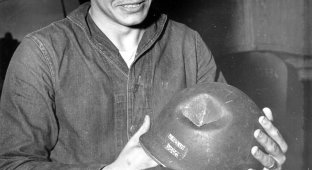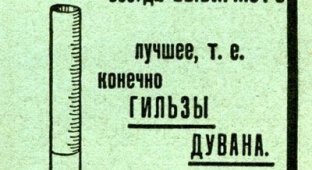History of military helmets in Western Europe: from the early Middle Ages to the early modern period (48 photos)
Helmets are among the most famous military artifacts. Having appeared at the dawn of civilization, they almost never completely went out of use, constantly improving and developing.
But, perhaps, helmets reached their greatest flourishing in the Middle Ages and early modern times - there were dozens of types. This article is dedicated to this interesting historical period. All the helmets, photographs of which are presented in the article, are genuine artifacts of their time, most are museum exhibits. If there is information about weight, it is indicated in the description.

Spangenhelm. Northern Europe. VI century

Spangenhelm, from it. Spangenhelm - "rivet helmet", was a popular European combat helmet of the Early Middle Ages. The spangenhelm, unlike the nasalhelm, is a segmental helmet made of metal strips that form the structure of the helmet. The strips are connected by rivets to three to six steel or bronze plates. The structure has a conical design. The spangenhelm could include a nose guard (nasal guard) or a half mask that protected the upper part of the face and, very rarely, a full face mask. Earlier spangenhelms often included flaps to protect the cheeks, made of metal or leather. Initially, spangenhelm-type helmets appeared in Central Asia, more precisely in Ancient Persia, from where, during the decline of the Roman Empire, they penetrated into Europe along the southern route, along the Black Sea.
Spangenhelm. Middle Asia. VIII century

It was in such helmets that warriors from the nomadic tribes of the Eurasian steppes, such as the Sarmatians, who were recruited into the service of the collapsing Roman Empire, appeared in Europe in the 5th century. By the 6th century it was already the most common helmet in Europe, including among the Germans, as well as throughout the Middle East.
Vendel helmet. Scandinavia. VII century

The helmet remained in use until at least the 9th century. The Spangenhelm was an effective protective helmet that was relatively easy to make. However, the weakness of the design due to segmentation eventually led to its displacement in the 9th century by all-metal nasal helmets.
Nasal helmet. France. Beginning of the 13th century

Nasal helmet (in the Russian tradition, Norman helmet), from English. Nasal Helm - "nasal helmet" or "nasal helmet" - is a type of combat helmet used from the Early to High Middle Ages. It is a further development of the earlier Spangenhelm. The nasal helmet has a dome-shaped or raised pointed center, with a single prominent metal plate that extends down the nose. The plate provides additional facial protection.
One-piece nasal helmet. Moravia. XI century

The nasal helmet appears throughout Europe at the end of the 9th century. It becomes the predominant form of head protection, replacing the previous spangenhelms and Wendel-type helmets. It, or rather one of its earliest versions - vasgard, became the most popular form of head protection at that time. The nasal helmet began to fall out of favor in the late 12th century, in favor of helmets that provided better facial protection. Although the nasal helmet finally fell out of favor among the higher class of knights by the mid-13th century, they were still widespread among archers, for whom a wide field of vision was essential.
Norman wearing a nasal helmet. Amateur reconstruction.

Topfhelm. Nuremberg. Beginning of the 14th century

Great helmet (from English Great Helm) or topfhelm, from it. Topfhelm - "pot helmet", is the most common Western European knight's helmet of the High Middle Ages. In Spain, topfhelms were called Yelmo de Zaragoza - "Zaragoza helmet", where they first appeared among knights on the Iberian Peninsula. It arose at the end of the 12th century, during the era of the Crusades, and remained in use until the 14th century. They were widely used by knights and extremely rarely by heavy infantry from approximately 1220 to 1340. In its simplest form, a great helmet is a flat-topped cylinder that completely covers the head and has only very narrow slits for the eyes and small holes for breathing. Later versions of the grand slam featured a more curved design towards the top to better deflect and reduce the impact of impacts. This later version, with a more conical top, is known as the sugarloaf helmet (from the English Sugarloaf Helm) or kübelhelm, from it. Kubelhelm - "bucket helmet".
Kübelhelm. England. Around 1370

Although the large helmet offered better protection than previous helmets such as the nasal and spangenhelm, it had the major disadvantage of a severely limited field of vision for the wearer and very poor ventilation, which, due to the lack of a visor, could not be corrected. Knights wore a felt balaclava under their great helmet and could also wear a close-fitting steel cap (helmet) known as a cervelier. A chain mail ventil could also be attached to the great helmet to protect the neck, throat and shoulders of the wearer. Gradually, the cervelier developed from its early form into an independent helmet - the bascinet, and replaced the great helmet on the battlefield. The grand helmet gradually fell out of use during the 14th century, but was still used in tournaments for a long time after that. At tournaments, his new heavy version of shtehhelm appeared, from him. Stechhelm - "toad head" helmet.
Stechhelm. Northern Italy. Weight 8.77 kg. Around 1475-1500

Stechhelm. England or Flanders. Weight 7.4 kg. Around 1410-1450

Composite armor with shtehhelm for the tournaments of King Philip I of Spain. Beginning of the 16th century

Open type bascinet. Weight 1.8 kg. Around 1370-1400

The earliest versions of the bascinet from the beginning of the 14th century did not have any visors and were worn under tophelms. During brutal hand-to-hand combat, knights often abandoned the large helmet because it impeded breathing and had poor visibility. Thus, having an additional smaller helmet underneath the larger one was a real advantage in hand-to-hand combat. By the middle of the 14th century, most knights abandoned the great helmet in favor of the bascinet. Bascinets, mostly open type, were also actively used by infantry. The earliest bascinets were still open and could even have a nasal plate. However, they quickly developed visors, mostly conical in shape, for better ventilation. They began to be called Hundsgugel, from it. Hundsgugel - "dog's face", also "pig's snout" (from English: Pig Faced). The second type was the klapvisor - a visor with a less forward shape, attached with a single rod in front to the forehead and secured with straps on the sides, which was most common in Germany.
Bascinet with Hundsgugel visor. Germany. Around 1375-1400

Bascinet with clapvisor visor. Germany. Around 1420-1430

Bascinet with raised visor klapvisor. Germany. Around 1420-1430

Early versions sometimes had a mail aventile to protect the wearer's neck, throat and shoulders, while later versions (from the early 15th century) often protected the neck with a separate plate, a necklace of plate. Bascinets almost always have small holes made around the edges of the helmet. These holes were used to secure the padding inside the helmet. Wearing a bascinet no longer requires a separate balaclava, like a large helmet. The upholstery was made of linen or linen and stuffed with a mixture of wool and horsehair. Chin straps were not used to secure the helmet on the head back then. The bascinet with and without a visor (knights often carried several interchangeable visors with them - one for a spear strike, the other for hand-to-hand combat) was the most common helmet worn in Europe throughout the 14th century and the beginning of the 15th century, including almost the entire Hundred Years War . In Germany, at the beginning of the 15th century, a more convex version of the bascinet appeared with larger plates to better protect the throat. The visor and the helmet itself acquired a rounded shape with many holes. Such helmets were called grand bascinets, which were used by knights in tournaments until they developed into closed helmets by the end of the 15th century.
Grand bascinet. Perhaps England. Around 1510

Composite chain mail and plate battle armor with a Hundskugel bascinet from the late 14th to first half of the 15th centuries. Museum reconstruction

Open type salad. Italy or Spain. Weight 1.51 kg. Around 1470-1490

The salad or celata was a combat helmet that replaced the bascinet in Northern Europe and Hungary in the mid-15th century. Most of the richer knights wore salads with additional extended plates in front that protected the lower part of the face, jaw and neck, called bevor.
Closed salad. Germany. Weight 3.62 kg. Around 1490

The bevor may be made from a single plate or formed from several plates around the neck and chin. The bevor was usually worn together with the salad, and later with some Burgundian helmets (bourguignots), in which the bevor was already built into the helmet itself, essentially becoming a visor. In both cases, two pieces of armor were combined to provide protection for the entire head and neck. Most salads did not need any ventilation holes, since there was a natural gap between the helmet itself and the bevor, just near the wearer's mouth and nose. The distinctive features of the salads are their rounded shape and the strongly protruding back of the helmet, which became increasingly longer over time. It could be a monolithic structure with a helmet or attached separately and consist of several plates. The visor of some salads was movable - it was possible to raise and lower it if necessary. It was actively used until the 30s of the 16th century. both knights and infantry, especially in Germany, when they were replaced by burgignots and closed helmets.
Salad with visor and bevor. Southern Germany. Weight 3.79 kg. Around 1480-1490

The design of the salads contrasted with the Italian variety of combat helmets, the barbutes, which were popular in Italy at the same time.

Barbute. Brescia. Weight 2.21 kg. Around 1470-1480

When creating it, Italian craftsmen took as an example classic Greek helmets, which were sometimes accidentally found in ancient ruins in Italy. A distinctive feature of barbutes, as a rule, is the open part of the helmet formed in the shape of the letters “T” or “Y” for the eyes and mouth. Has not picked up. The existence of barbutes was limited to the 15th century.
Open type burgignot with strap. Northern Italy. Probably Milan. 1571

Burguignot, Burgundian helmet or Sturmhaube, from it. Sturmhaube - "assault helmet", first appeared in Burgundy in the first half of the 16th century. A bowl-shaped helmet with a plated neck collar and usually a crest. Has a large number of varieties. There are open and closed types. In any case, they have a movable top shield in the form of a visor that rises upward, and ears that open to the sides, which are hinged to the helmet. If the ears are not connected to each other or are connected only by a chin strap, then this is an open-type burguignette.
Closed burgignot. Weight 2.4 kg. Around 1620-1630

Closed burgignot. France. Weight 2.24 kg. 1610

In the closed type, the ears form a rigid structure and are connected together at the front with a hook, forming a chin pad. They are round in shape and almost all have a thin ridge of varying heights. In the most protected version, it can be supplemented with a chinrest that folds downwards instead of earflaps - a falling buffe, forming a semblance of a visor.
Burguignot with a folding chinrest of the Hungarian type. Germany. Around 1550

Burguignot with a raised visor and a lowered chinrest of the Hungarian type. Germany. Around 1550

Very comfortable to wear helmets that provide good protection. It was a combat helmet and was very actively used by cavalry, and less often by infantrymen. It has a unique Italian variety - a heavy savoyard assault helmet, the distinctive external feature of which is a grotesquely simplified likeness of a cheerful face with a grinning mouth
Bourguignot Savoyard. Northern Italy. Weight 4.5 kg. Around 1600

Bourguignot Savoyard with his visor raised and his ears folded back. Northern Italy. Weight 4.5 kg. Around 1600

Composite battle armor with burgignot. Nuremberg. Last quarter of the 16th century.

Morion of the Trabantleibguard of the Elector of Saxony Christian II. Around 1600

Morion is a well-known all-metal open helmet with a very large crest and strongly curved front and back brims. It appeared at the beginning of the 16th century and was in use at the beginning of the 17th century. It became widespread throughout Western Europe, especially in Spain and England. In popular culture it is inextricably linked with the image of the conquistadors. Used by both cavalry and infantry.
Arme. Milan. Weight 2.9 kg. Around 1490

Arme appeared at the end of the 15th century (although in Italy in the first half of the 15th century), and lasted almost the entire 16th century. Along with full-face helmets, they are the most advanced and at the same time protective helmets in history. A distinctive feature of the arme is the presence of two movable drop-down parts - earphones, mounted on hinges and connected to the chin with a pin and protecting the sides of the head, cheeks and chin. They always have a visor that goes up and back. Arme could have built-in protection for the neck and collarbones.
Arme with the visor removed. Northern Italy. Weight 3.6 kg. Around 1470-1510

Arme and closed helmets have a special type of visor in the form of a grotesque face mask with a large hooked nose.
Arme with a visor-mask. Innsbruck or Nuremberg. Weight 3.23 kg. Around 1520-1525

Closed helmet with visor-mask. Around 1520-1530

Used by knights in tournaments and in battle. Arme and closed helmets were expensive and therefore not available to all knights.

Closed helmet with segmental visor. Milan. Weight 2.78 kg. 1590-1595

The closed helmet was a combat helmet worn by cavalrymen in the late medieval and renaissance eras - the 16th century and the first half of the 17th century. As a type of helmet, it appeared towards the end of the 15th century, although there are earlier examples. The closed helmet is very similar to the earlier Arme, but has a different opening method and design. While the arme has two movable, drop-down earpieces, the full-face helmet instead has a sort of built-in bevor or lower visor that is attached to the helmet in the same manner as its upper visor, often on the same mounts. The lower and upper visors of closed helmets are movable.

Closed helmet. Augsburg or Nuremberg. Weight 2.8 kg. Around 1580

Closed helmet. Northern Italy. Weight 3.86 kg. Around 1600-1620

A closed helmet completely protects the head, has a characteristic rounded shape and, as a rule, a massive grooved ridge. Often has built-in protection for the neck, throat and collarbones.
Closed helmet of the stadtholder of the Spanish Netherlands Fernando Alvarez de Toledo, Duke of Alba. Milan. Around 1570

Composite armor with a closed helmet. Possibly a Knight of the Order of Malta. Milan. Around 1590

During the 17th century, helmets, along with other armor, gradually fell out of use in military affairs: they simply became useless against increasingly improved firearms, remaining only with the heavy cavalry in Europe - the cuirassiers.
Early cuirassier helmet. Nuremberg. Around 1610-1620

Arquebuser helmet. England. Weight 2 kg. Around 1630-1640

Siege helmet for escalade (storming fortress walls using ladders). France. Weight 10.17 kg. Around 1650-1670

Armor with cuirassier helmet of King Pedro II of Portugal. Weight (total) 19.6 kg. 1683

The approach to the formation of armies has changed significantly: if in the previous era, knights needed years of training and a lot of money for equipment to master edged weapons, then the advent of firearms turned everything upside down. The cost of training and equipping a combat unit for effective combat has decreased dramatically. There was no longer a need for expensive armor. For several centuries, helmets practically went out of use. However, at the beginning of the 20th century, they reappeared among the military - already in the form of well-known helmets.
German M-17 and M-18 helmets from World War II. Photo from the late 30s.
























